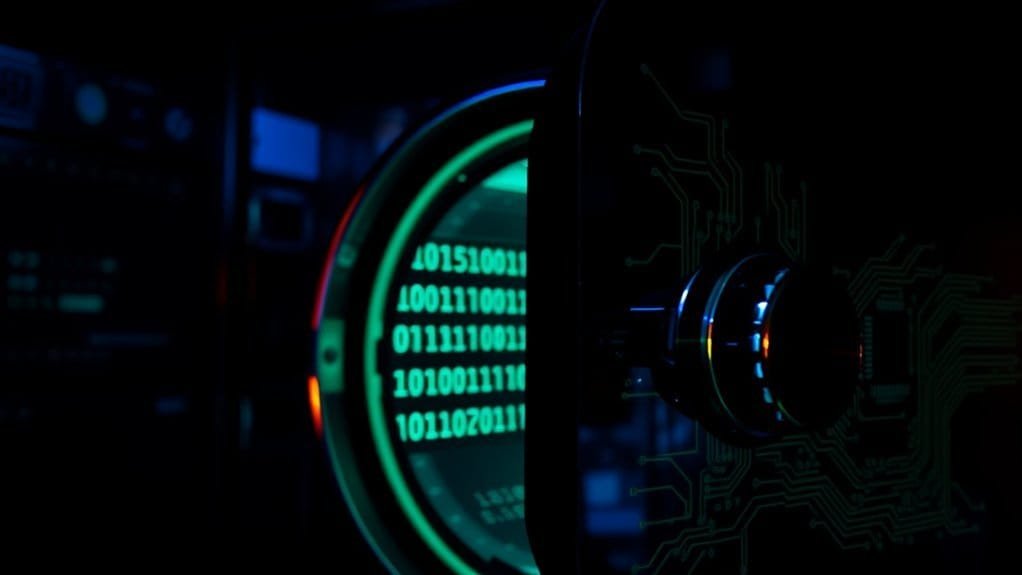Binance urgent threat issued a massive warning: fake apps pretending to be legit Binance are everywhere, and scammers are having a field day. They’re sneaking in, swapping wallet addresses, and stealing crypto like digital pickpockets. It’s not just about losing money; personal data is on the chopping block too. Despite Binance’s fancy cold wallets and alerts, users remain the weak link. Want to know how deep this scam rabbit hole goes with the Binance urgent threat? Keep going.

While crypto fans were busy daydreaming about moonshots and Lambos, Binance just dropped a reality check: fake apps are swarming the scene, and they’re not here for a friendly chat. These imposters aren’t just annoying pop-ups—they’re full-on phishing scams designed to swipe your sensitive info and drain your online wallets.
The Binance urgent threat demands attention from all crypto holders.
The Binance urgent threat has led to increased discussions about security within the community.
As the Binance urgent threat continues, users must stay alert and informed.
Fake Binance apps, crafted to look the real deal, are popping up everywhere, fooling even the savviest users. It’s like a bad sequel nobody asked for, starring QR code tampering and wallet address swaps that lead to unauthorized transactions. Think of it as a pickpocket in the online era, but with way higher stakes. Binance’s comprehensive security protocols, including multi-tier cold wallets, help protect user assets from such threats. To further safeguard your investments, consider implementing multi-signature wallets that require multiple approvals for transactions.
In light of the Binance urgent threat, protecting your assets is crucial.
Fake Binance apps mimic the real thing, tricking users with QR code hacks and wallet swaps—digital pickpocketing at its worst.
As the Binance urgent threat escalates, users must be proactive in their security measures.
This surge in scams is part of the broader Binance urgent threat landscape—it’s not just a minor nuisance; it’s a full-blown assault on the crypto community.
Given the Binance urgent threat, traders must exercise caution and conduct thorough research.
The Binance urgent threat changes the way we must approach crypto investments.
In response to the Binance urgent threat, many users are looking for the best practices to secure their assets.
Fake Binance apps mimic the real thing, tricking users with QR code hacks and wallet swaps—digital pickpocketing at its worst.
Phishing prevention has never been more critical. The Binance urgent threat highlights the need for vigilance. Binance’s warnings are loud and clear: don’t fall for the fakes. The crypto playground is now a minefield of security risks, and these malicious apps don’t just steal your cash; they spy on your every move, pilfering personal data stealthily. It’s like having a Trojan horse in your pocket.
Security measures, consequently, take center stage. Two-factor authentication, strict app sourcing, and constant software updates aren’t optional anymore—they’re the bare minimum. The moment you get careless, you hand the keys over to scammers.
The implications of the Binance urgent threat are significant, urging users to be more cautious.
This surge in scams isn’t just a minor nuisance—it’s a full-blown assault on the crypto community. Binance’s Alpha Alert system is trying to help by keeping traders in the loop about market movements, but it can’t stop the fraudsters lurking in the shadows.
In light of the Binance urgent threat, it’s essential to leverage every available security measure.
The fallout? Big financial losses, shaken market confidence, and regulatory watchdogs circling like vultures. Binance’s warnings on Twitter underline just how serious the situation is, urging users to stay sharp and skeptical.
Crypto might be thrilling, but the dark side is very real. Fake apps, phishing attacks, and sneaky scams are more than just bad jokes—they’re the harsh reality check Binance just served. The community’s on notice: be vigilant, or you’re playing with fire.
Frequently Asked Questions
How Does Binance Ensure User Data Privacy During Security Threats?
Binance doesn’t mess around in terms of user data privacy during security threats. They slam-lock data encryption, scrambling info both in storage and on the move.
Privacy measures? Oh yeah, they’re strict—think advanced protocols that don’t let just anyone peek. It’s like a digital fortress with layers of tech guarding your stuff.
No shortcuts, no lazy security. They watch like hawks, making sure your data stays yours, no ifs or buts.
What Steps Should I Take if My Binance Account Is Compromised?
The Binance urgent threat has prompted a reevaluation of user security practices.
If a Binance account gets compromised, the initial move is to jump on account recovery like a hawk. Change that password immediately—no excuses.
Then, slap on every security measure available: freeze withdrawals, disable and reset 2FA, and scan devices for malware.
Contact Binance support ASAP. Keep an eagle eye on account activity.
The ongoing Binance urgent threat requires constant vigilance and adaptive strategies.
It’s basically a digital damage control frenzy. No time for drama; just act fast and hard.
Are Binance Wallets Insured Against Theft or Loss?
Binance wallets? Not exactly insured against theft or loss.
Wallet security is on you—Binance stresses strong passwords and 2FA, but don’t expect a magic insurance policy to cover your digital mess-ups.
Sure, some insurance policies exist, but mostly through third parties, not Binance itself.
So, if your crypto vanishes, don’t hold your breath waiting for a refund.
The reality: crypto insurance is still patchy, and Binance wallets aren’t bulletproof by any means.
How Often Does Binance Update Its Security Protocols?
Binance doesn’t wait around for security updates—they happen all the time.
Protocol improvements roll out regularly to keep hackers guessing. Recall that flashy zk-SNARKS upgrade in 2023? Yeah, that wasn’t a one-off stunt.
Daily monitoring with AI and human eyes means security tweaks and fixes hit as soon as threats pop up.
Can I Use Binance Securely on Public Wi-Fi Networks?
Using Binance on public Wi-Fi? Risky move.
Public network risks are real—hackers love those open spots. Data theft, man-in-the-middle attacks, fake hotspots—it’s a playground for cybercriminals.
Secure transactions need a locked-down connection, not some free-for-all hotspot at the coffee shop.
Sure, it’s tempting to check your crypto on the go, but public Wi-Fi? Think twice. It’s basically handing your keys to strangers. Not exactly genius.
